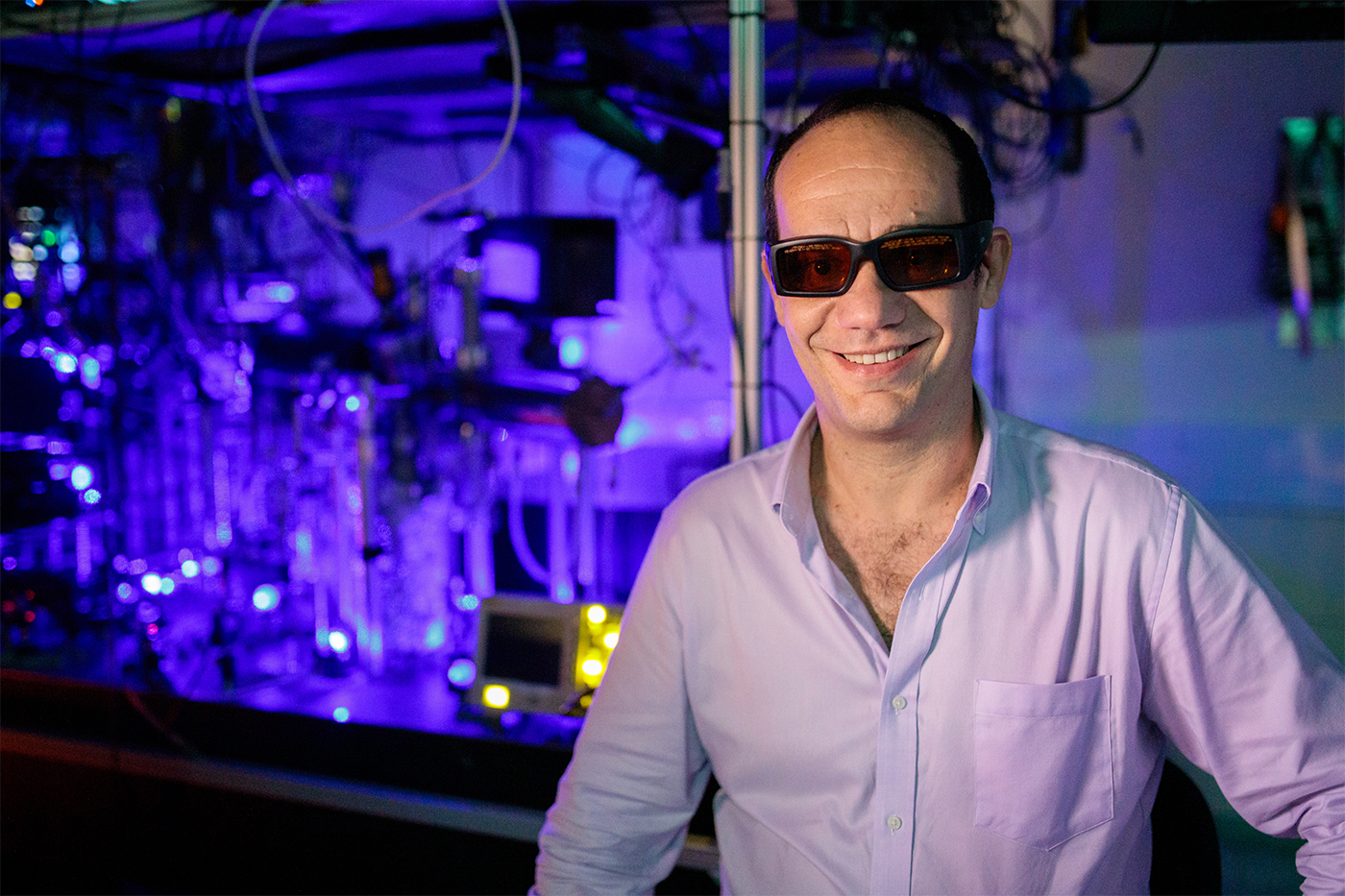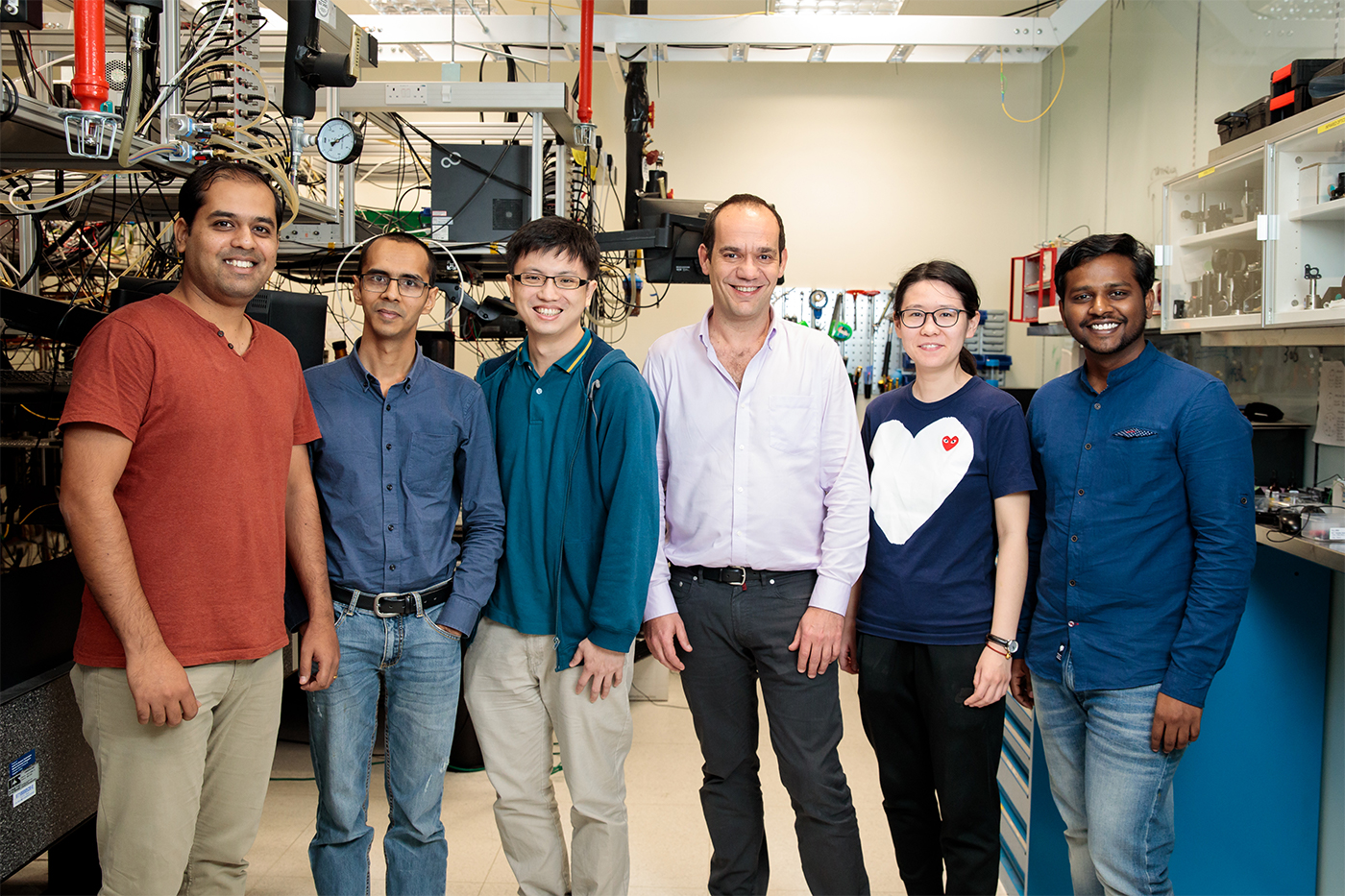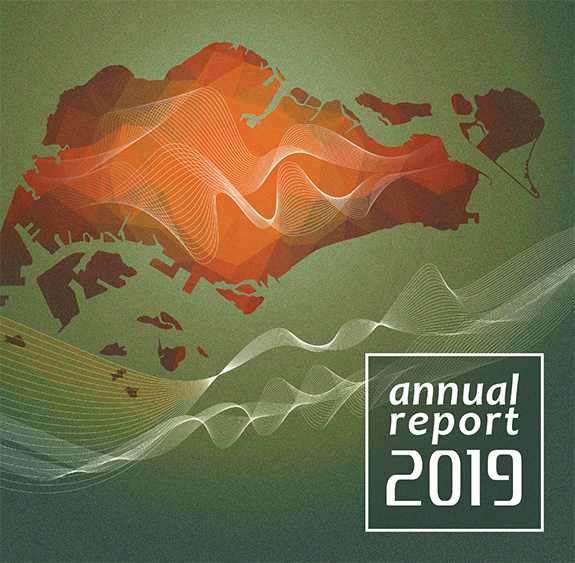Highlights
Meet David Wilkowski, putting a new spin on cold strontium atoms
 The laser used to control strontium atoms in experiments run by David Wilkowski, who was appointed a CQT Principal Investigator in 2019, bathes his laboratory in a purple glow.
The laser used to control strontium atoms in experiments run by David Wilkowski, who was appointed a CQT Principal Investigator in 2019, bathes his laboratory in a purple glow.
In 2019, CQT welcomed experimentalist David Wilkowski as Principal Investigator. David brings with him decades of experience in cold atoms research. He is also an Associate Professor at the School of Physical and Mathematical Sciences of the Nanyang Technological University (NTU).
David first joined CQT in 2009 as a Visiting Associate Professor through a collaboration with the French National Centre for Scientific Research (CNRS). In this time, David has enjoyed building his research projects at NTU from scratch. His group now has a total of three cold atom setups, two with strontium and one with caesium atoms.
“In experimental science,” he says, “we are attached to our equipment and we have to ask ourselves: what can we do with this machine and can we choose the right element to work with? Cold atom experiments may take several years to set up.”
Cold atoms are promising for condensed matter physics, since they offer a controllable platform for the simulation of particles’ actions. Commonly, experiments aim to simulate electron systems, which have symmetry SU(2) corresponding to the electron’s half-integer quantum spin.
Ongoing projects
In his most established setup with strontium, David envisions going to higher spins to study more complex systems. “We can go up to spin-9/2, and I think it’s very exciting to see what these higher symmetries can bring,” he says. Such work may address unsolved questions in material science or lead to new quantum error-correction protocols.
David is using strontium atoms to simulate and study the artificial gauge fields they can create. The experiments involve watching the evolution of the atoms’ spin degrees of freedom. The team in 2018 observed non-Abelian geometric transformations in stationary atoms that experienced different temporal loop patterns of the laser phase. Instead of keeping the atoms’ positions fixed, David now wants to let them move. “We expect to see the equivalent of a spin Hall effect: the gauge field will separate the two spin components. While the gauge field remains constant and homogenous, the atoms will make their own little loop,” he says.
The second strontium setup is under construction and aims at precision measurement, exploiting an optical clock transition to measure gravitational effects. This experiment may soon find practical applications, but David sees it as a stepping stone to more revealing results. “It’s important to have intermediate goals, to reach some results in between. I believe that fundamental studies are still crucial for the development of quantum technologies,” says David.
The group’s third project is hosted by NTU’s Centre for Disruptive Photonic Technologies. The aims are to trap, manipulate and image caesium atoms beyond the diffraction limit, using nanophotonic technology.
A collaborative environment
 David works closely with his group members and strives to help them develop into independent researchers. Pictured from left to right are Research Fellow Ketan Damji Rathod, PhD student Mehedi Hasan, Research Fellow Kwong Chang Chi, David, and PhD students Li Jianing and Chetan Sriram Madasu.
David works closely with his group members and strives to help them develop into independent researchers. Pictured from left to right are Research Fellow Ketan Damji Rathod, PhD student Mehedi Hasan, Research Fellow Kwong Chang Chi, David, and PhD students Li Jianing and Chetan Sriram Madasu.
To ensure everything runs smoothly, David is proactive in his collaborations and strives to help his group members develop into independent researchers by mentoring them with respect and kindness.
“I work with my PhD students a lot,” David says, “they have a well-defined project on a well-defined experiment. When the student has difficulties, you need to know enough to help them debug, but you don’t have to micromanage. At the end of their project, I hope that my students are better than me at their experiment — they should be the experts and I should learn from them.”
He plans to grow his team in the year ahead and will be listing opportunities on his group website. Candidates can also check the CQT job listings page for opportunities.
This article was adapted from the feature, “A new spin on cold strontium atoms”, in the CQT 2019 Annual Report. Read our annual reports here: https://www.quantumlah.org/page/key/AnnualReports.
Learn more
Related Stories
 | Presenting CQT's Annual Report for 2019 April 29 2020 |
France-Singapore collaboration in quantum renewed February 06 2018 | |
Experiments reveal new potential for cold atoms in quantum simulation September 06 2018 | |
 | Atoms cooperate to emit sequence of 'superflashes' January 25 2016 |






